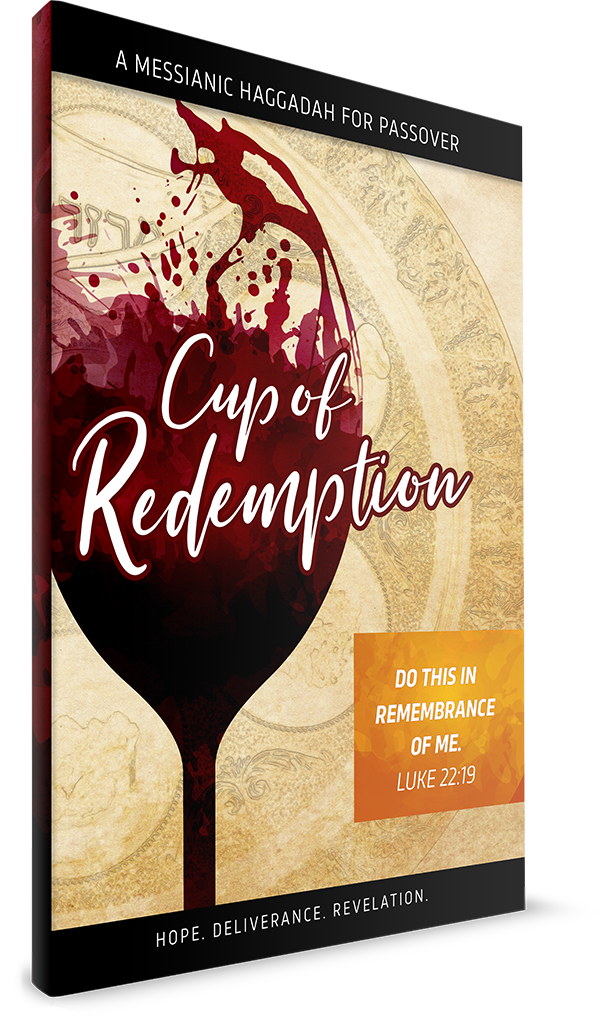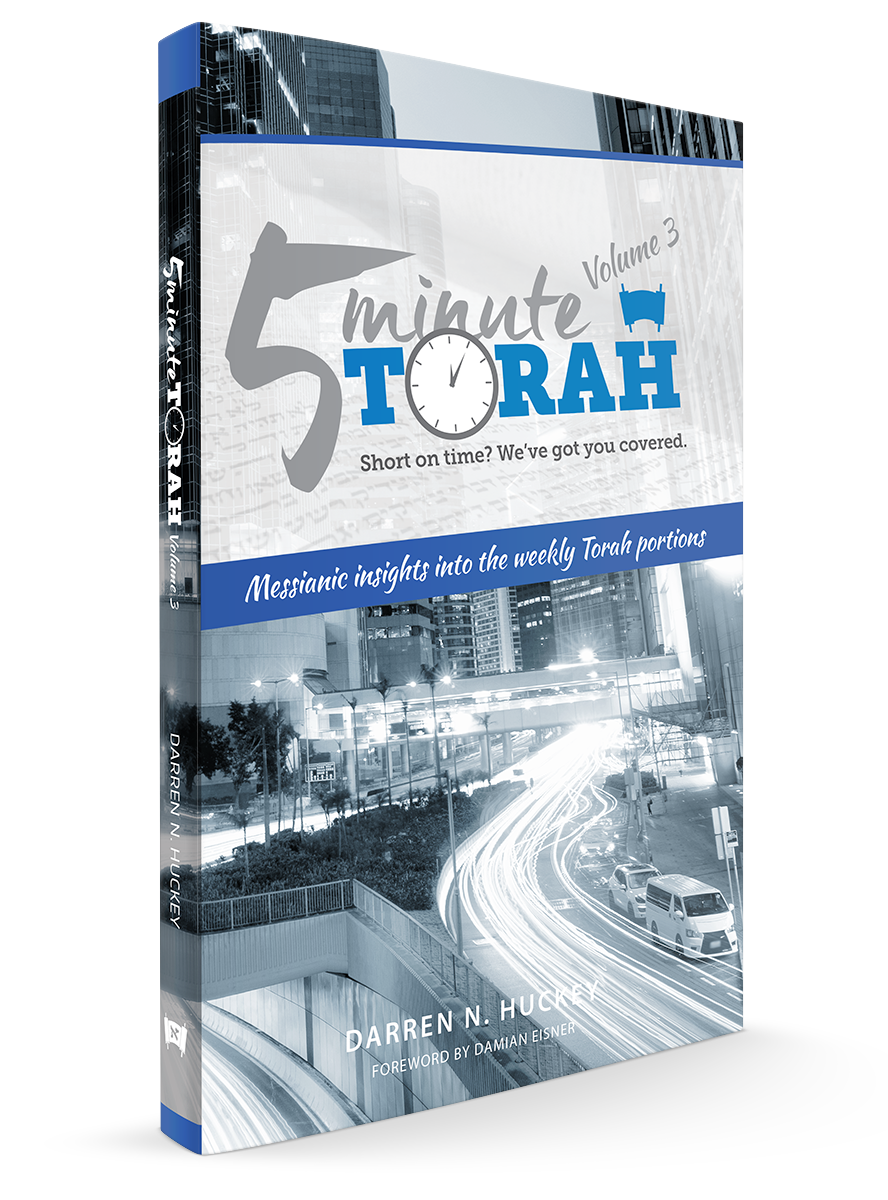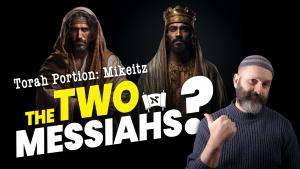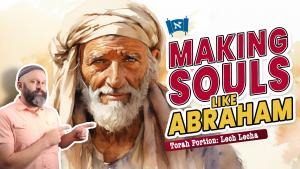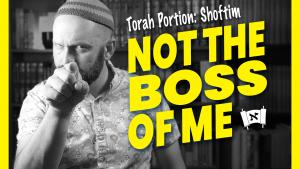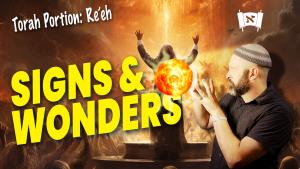The Search for Chametz
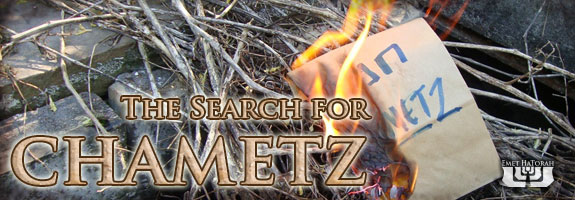
This day shall be for you a memorial day, and you shall keep it as a feast to the Lord; throughout your generations, as a statute forever, you shall keep it as a feast. Seven days you shall eat unleavened bread. On the first day you shall remove leaven out of your houses, for if anyone eats what is leavened, from the first day until the seventh day, that person shall be cut off from Israel … For seven days no leaven is to be found in your houses. If anyone eats what is leavened, that person will be cut off from the congregation of Israel, whether he is a sojourner or a native of the land. You shall eat nothing leavened; in all your dwelling places you shall eat unleavened bread. (Exodus 12:14-15, 19-20)
An Eternal Tradition
Every year just before Passover Jewish families all across the world turn their homes inside out in search of the dreaded chametz, or food items containing leavening. Many go to great lengths to assure the search for chametz is complete. Couches are pulled out, beds are broken down, ovens are pulled out, shelf-paper is replaced — all due to the search for chametz that might be hiding in any crack or cranny. And the reason for this is a good one. The Scriptures state quite clearly, “On the first day you shall remove leaven out of your houses” (Exodus 12:15), and then again, “For seven days no leaven is to be found in your houses” (Exodus 12:19). Hashem makes it pretty clear that He’s serious about this leavening thing, and even makes a contingency that if a person actually eats of anything that is leavened during this time, “that person will be cut off from the congregation of Israel, whether he is a sojourner or a native of the land. You shall eat nothing leavened; in all your dwelling places you shall eat unleavened bread” (Exodus 12:19-20). For most Christians, removing leaven and leavened products from one’s home may seem a superficial or even legalistic endeavor. But for the Children of Israel, this is serious business. It’s not just an ancient ritual of bygone years. It is a spiritual reality that exists to this day, as it is written, “you shall observe this day, throughout your generations, as a statute forever” (Exodus 12:17, emphasis added). God not only expected those fleeing from Egypt to keep this decree during their lifetime, but emphasized that this tradition be kept “forever” — dor l’dor — from one generation to the next. According to the instructions of the One who redeemed Israel from Egypt — Who calls Himself by this very title — every person of Jewish decent is to painstakingly remove all traces of chametz from their dwelling year after year at this season. It is a yearly reminder of the redemption from Egypt, as well as a time to use the search for chametz to drive home the spiritual reality of hidden sin and its ramifications. Let me explain …
Leaven as Sin
The Talmud asks the question, “And who prevents us from performing Your will?” It answers its own question by responding, “The yeast in the dough” (b.Berachot 17a). At first, the answer doesn’t seem to make a lot of sense. But if we think about it, we can make the connection. In Jewish and biblical tradition leaven is the quintessential analogy for sin. It represents that which is impure, corrupt, infected and arrogant. The “yeast” (in this context) which prohibits man from properly and whole-heartedly serving his Creator is his yetzer hara, or “evil inclination,” a term used frequently in Judaism equivalent to what Paul calls “the flesh” (cf. Romans 7, Galatians 5). Frequently, the Talmud uses this phrase, “the yeast in the dough,” to refer to man’s propensity towards evil. James, the brother of Yeshua, affirms this concept when he says, “But each person is tempted when he is lured and enticed by his own desire. Then desire when it has conceived gives birth to sin, and sin when it is fully grown brings forth death” (James 1:14-15). We don’t need to blame haSatan for our sinful behavior. It is the desire within us and our submission to our sin nature which make us fall into sin. Yeshua uses the yeast/leaven metaphor in a fashion similar to the Talmud. We hear this when he instructs his disciples saying, “Watch out; beware of the leaven of the Pharisees and the leaven of Herod” (Mark 8:15). His disciples, being educated in the basics of Scripture but not yet as familiar with the rabbinic jargon, begin to scratch their heads trying to grasp the meaning of Yeshua’s instruction. Contextually, they had just witnessed the feeding of the five thousand a day or two previously and the feeding of the four thousand just moments beforehand. They began to wonder about the meaning of Yeshua’s reprimand. Maybe they thought he was criticizing them for not saving some of the miraculous bread to take with them on their voyage across Lake Galilee and sustain them during their travels there? Maybe Yeshua thought they had some starter dough that had somehow become contaminated with their encounter with the Pharisees? Maybe he didn’t want them relying on the food from the now-critical Pharisees and the Herodian traitors? But Yeshua heard their discussion and their erroneous conclusions and interrupted, “Do you not yet understand?” (Mark 8:21). After realizing that his disciples really had no clue, Yeshua sets the record straight and tells them plainly that the yeast for which they must be on their guard is hypocrisy (Luke 12:1).1
The Search
There is a pre-Passover tradition that on the evening before Passover begins one final search for chametz takes place. It is more of a token of finality and time to engage the children than to actually do a final, house-wide search, but it represents something very important. The major search and cleaning has already been done. This search represents a final inspection to remove any traces of chametz that may be hiding or have somehow slipped by without our knowledge. The interesting component of this ritual is that the search is traditionally done with a candle, even in an age where we have the convenience of flashlights. The search is done together by the father and the children. As they come across a piece of chametz (conveniently placed by the mother), they brush it onto a wooden spoon with a feather and place it into a paper bag which will be ritually burned the following morning. King David said, “Search me, O God, and know my heart! Try me and know my thoughts! And see if there be any grievous way in me, and lead me in the way everlasting!” (Psalm 139:23-24). This ritual represents this plea. Rather than being oblivious to our sins, we are to be carefully examining ourselves asking the Holy Spirit to illuminate the corners of our hearts to see if any chametz may be lurking unbeknownst to us. The Torah sheds some light on this when it gives us instructions in regard to observing the Feast of Unleavened Bread. In Exodus 12, Hashem is giving the Children of Israel instructions for that first Passover, as well as additional instructions for future observances. In verse 17, there is an ambiguous phrase that has been subject to various translations over the years. The Hebrew of the first phrase reads: וּשְׁמַרְתֶּם אֶת–הַמַּצּוֹת — Ushmartem et hamatzot, which literally means “And you shall guard the matzot (plural for matzah/unleavened bread).” This is usually smoothed over in translation and rendered something to the effect of “You shall keep the Feast of Unleavened Bread.” But literally, this is not what it’s saying. The word chag (feast) is not included as it is just three verses previously. This appears to be a slightly different context in which Hashem is instructing the Children of Israel to not allow their matzah to become leavened during the feast. It is a glimpse into the spiritual principle of rejecting apathy and being proactive in our spiritual discernment.
Guarding the Matzah
When we look at a piece of matzah and compare it with a piece of leavened bread (particularly sour dough, which was the only type of “yeast” bread known in the ancient world), what do we see? What is the difference between the two? One is flat, having been baked before giving it time to rise; and one is puffed up, having been allowed to rise before baking. They have both been made from the same basic ingredients: flour and water. The difference between the two is someone had to pay close attention to the unleavened bread to ensure that it did not rise, while the other was left alone and rose on its own accord. It’s easy to allow sin to creep in. Just don’t do a thing. Don’t put your guard up. Don’t do regular self-examination. Don’t spend regular time in prayer and study each day. Don’t do anything that would enhance you spiritually. Just don’t do a thing. Sin will work its way into us and puff us up so that we are spiritually blind to our own undoing. Remaining pure and unblemished by sin and the world requires much more effort. It requires us to be proactively aware of our spiritual condition and to guard against the influences of the world, rather than sitting back and allowing the world and its influences to permeate us. It’s the difference between a loaf of bread and a piece of matzah. Israel was set free for a purpose and it wasn’t to return to being slaves. We have been made free as well, but not to return to the enslavement of sin. Paul says, “For freedom Christ has set us free; stand firm therefore, and do not submit again to a yoke of slavery” (Galatians 5:1). We are supposed to be guarding against “the yeast of the Pharisees” so that it does not creep into our hearts and lives to enslave us once more. Hypocrisy and arrogance follow on the heels of apathy. Let us conclude with Paul’s admonition in this matter and heed his counsel: “Your boasting is not good. Do you not know that a little leaven leavens the whole lump? Cleanse out the old leaven that you may be a new lump, as you really are unleavened. For Christ, our Passover lamb, has been sacrificed. Let us therefore celebrate the festival, not with the old leaven, the leaven of malice and evil, but with the unleavened bread of sincerity and truth” (1 Corinthians 5:6-8). May we all be a new lump of dough, purged of the old leaven we once knew in our lives and live daily guarding against the subtle infusing of the leaven of the world as we enter into this season of redemption.
Footnotes
1. Although Matthew records the interpretation of the “yeast of the Pharisees” as being, “the teaching of the Pharisees and Sadducees,” this is surely a scribal addition which attempts to explain Yeshua’s teaching since it is not a direct quote from Yeshua and does not appear to agree with either the context of the passage, nor his other teachings in this regard. For instance, his discourse against the Pharisees in Matthew 23 which begins with “The scribes and the Pharisees sit on Moses’ seat, so do and observe whatever they tell you, but not the works they do. For they preach, but do not practice” (Matthew 23:2-3) is in agreement with their teaching, but not their application. This statement is immediately followed (verses 4-36) by a litany of accusations which are centered around his condemnation of their hypocrisy and lack of integrity, rather than false teachings. His overarching accusation was that they “outwardly appear righteous to others, but within you are full of hypocrisy and lawlessness” (vs. 28).


